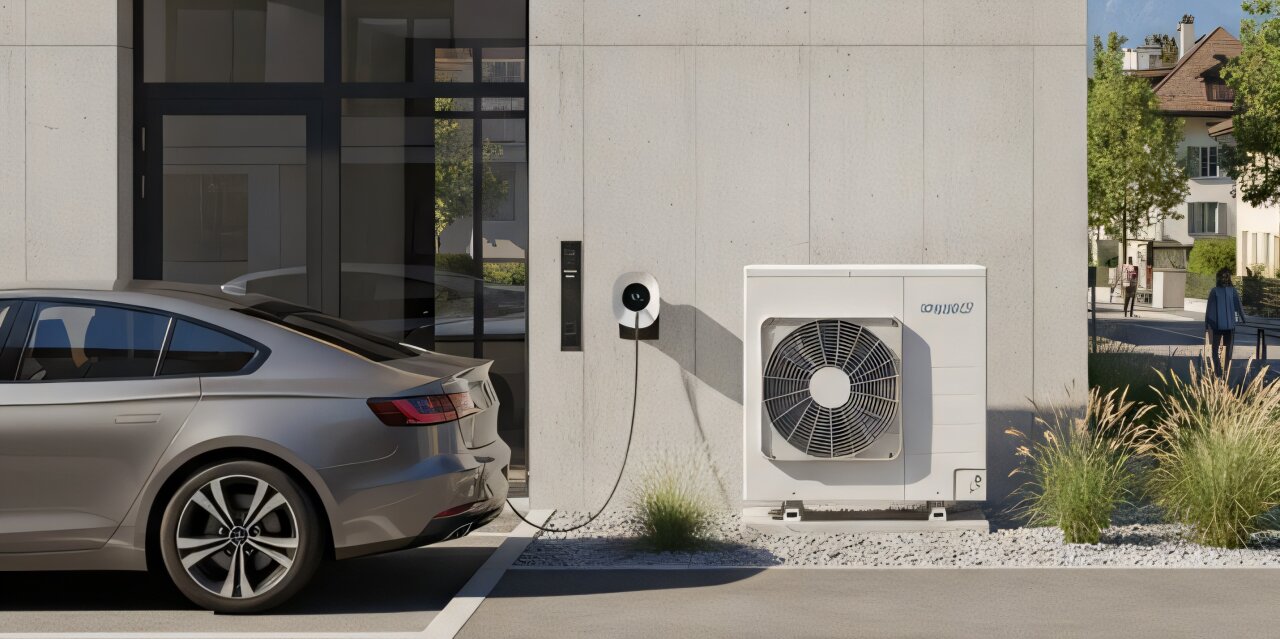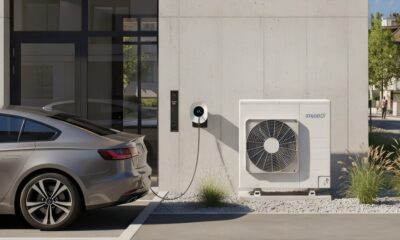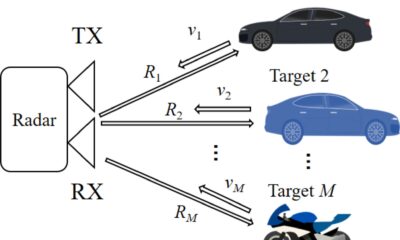Tech
Multitasking raises risk of phishing, study finds

In the information age, multitasking is often worn as a badge of honor. But according to new research led by Xuecong Lu, assistant professor of information security and digital forensics in UAlbany’s Massry School of Business, multitasking may also blind us to hidden threats, thereby increasing our chances of falling victim to cybercrime.
Published in the European Journal of Information Systems, Lu’s study centers on phishing—fraudulent emails designed to steal login credentials, personal information or money.
“Much of the existing research assumes that people are sitting quietly and focused when a phishing email arrives,” said Lu. “In reality, we are constantly multitasking—switching between messages, meetings and documents. That divided attention makes us more vulnerable.”
According to Forbes, criminals send an estimated 3.4 billion phishing emails every day. IBM has found that phishing-related breaches now cost businesses nearly $5 million per incident.
Cognitive load and phishing
The study used two experiments with nearly 1,000 participants to test how memory load affects phishing detection. When participants had to juggle complex memory tasks, their accuracy plummeted.
According to the research:
- High memory load reduces detection: When people were asked to juggle challenging memory tasks, they were far more likely to miss the warning signs of phishing emails
- Divided attention weakens judgment: Participants who split focus between multiple tasks struggled to separate legitimate messages from scams
- Simpler tasks improve accuracy: When the mental load was lighter, participants caught phishing attempts more consistently
“This shows that cognitive load is a critical factor,” said Lu, who teaches in the Department of Information Security and Digital Forensics at UAlbany’s Massry School of Business. “When your brain is already busy, you are more likely to miss red flags in an email.”
Prompts and framing cues
The study also tested whether reminders could help people stay alert. A short warning, such as “Be cautious, some messages may be phishing attempts,” improved detection, especially for emails that promised rewards.
The authors found that:
- Reminders refocus attention: A simple prompt was enough to offset some of the negative effects of multitasking
- Reward-style scams need extra caution: Gain-framed emails offering prizes or perks were easier to fall for unless participants were reminded to be careful
- Threatening messages drew scrutiny naturally: Loss-framed emails warning of penalties or account lockouts triggered more vigilance even without prompts
“These findings suggest that training and warning systems need to be context-aware,” Lu said. “We need interventions that reach people in the moment, when they are distracted and least able to spot danger.”
Smarter defenses
The financial stakes underscore why the research matters. According to IBM, the average cost of a phishing-related data breach is $4.88 million—a reminder that even a single click in a moment of distraction can be enormously expensive.
To reduce that risk, the study points to several practical strategies:
- Train under real-world conditions: Cybersecurity training should include scenarios that mimic the distractions employees face in daily work
- Build in just-in-time alerts: Pop-up reminders or security nudges can help users pause and reconsider before clicking
- Recognize emotional manipulation: Teaching people how scammers exploit urgency or the promise of rewards makes them less likely to fall victim
“Our research underscores that people are the last line of defense,” Lu said. “Technology can filter out many threats, but attackers know that humans are the weak link. By understanding how attention and memory work, we can build smarter systems that protect users even when they are not fully focused.”
More information:
Xuecong Lu et al, Phishing detection in multitasking contexts: the impact of working memory load, goal activation, and message framing cue on detection performance, European Journal of Information Systems (2025). DOI: 10.1080/0960085x.2025.2548543
Citation:
Multitasking raises risk of phishing, study finds (2025, September 26)
retrieved 26 September 2025
from https://techxplore.com/news/2025-09-multitasking-phishing.html
This document is subject to copyright. Apart from any fair dealing for the purpose of private study or research, no
part may be reproduced without the written permission. The content is provided for information purposes only.
Tech
Embee International adopts Coats Digital’s GSDCost Solution

Coats Digital is pleased to announce that leading global apparel manufacturer, Embee International Industries, has implemented Coats Digital’s GSDCost solution across its operations to eliminate inaccurate costing, streamline production processes, and boost competitiveness in international markets. The move forms a key part of Embee International’s digital transformation strategy to drive greater efficiency, improve quality, and strengthen partnerships with its portfolio of top global brands.
Embee International, a leading Egyptian apparel manufacturer, has adopted Coats Digital’s GSDCost solution to standardise work methods, ensure accurate labour costing, and boost efficiency.
The move eliminates manual costing errors, enhances production visibility, and supports its digital transformation to strengthen global competitiveness.
Headquartered in Ismailia, Egypt, with additional facilities in Suez, Port Said, and Alexandria, Embee International employs more than 12,000 people. The company operates 4,800 sewing machines across 134 sewing lines and produces approximately four million units per month. Its diverse product range includes outer jackets, trousers, chinos, denim pants, shorts, leggings, underwear, tees, polos, shirts, and soft-shell jackets.
As a trusted supplier to brands such as Decathlon, Fruit of the Loom, LC Waikiki, Walmart, Calvin Klein, Skechers, Lee Wrangler, New Yorkers, and Defacto, Embee International is committed to operational excellence, ethical manufacturing, and sustainable growth.
Prior to adopting GSDCost, Embee International relied on manual time studies using stopwatches and inconsistent measurement methods. This led to inaccurate Standard Minute Values (SMVs), incorrect costings, unrealistic production targets, lengthy negotiations with buyers, and inefficient line balancing. It also faced high production costs due to non-standardised work methods, inconsistent quality from variations in operator techniques, frequent bottlenecks and missed delivery deadlines caused by poor production visibility.
Sherwin Ricky Jonas, Head-Industrial Engineering & CI said: “GSDCost delivers a clear, data-driven view of our production processes, allowing us to measure performance accurately, standardise work methods, and optimise resource utilisation. By enhancing workforce efficiency while upholding quality and compliance standards, it fosters seamless interdepartmental coordination, streamlines operations, and drives continuous improvement through informed decision-making.”
With GSDCost, Embee International can now produce precise, data-backed labour costings that improve buyer negotiations and optimise operator methods to reduce SMVs and increase efficiency. The company is building a robust digital SMV library to accelerate new style costing and planning while improving production visibility and line balancing. This transformation is enabling Embee International to create a more agile, scalable operation capable of meeting the fast-paced demands of the global apparel market and supporting long-term growth.
Diaa Hasham, Digital Manager, Sales, Coats Digital, added: “Embee International is a leading force in global apparel manufacturing, and we are thrilled that such a prestigious company has chosen Coats Digital’s GSDCost solution to drive its digital transformation. By optimising production processes through proven, scientific methods, Embee International is strengthening the resilience and efficiency of its operations. In a market where brands demand closer collaboration with fully digitised supply chain partners, GSDCost provides a common language for manufacturers and brands alike, helping to meet cost, quality, and delivery targets while promoting sustainable and ethical practices. We look forward to supporting Embee International throughout its digital transformation journey, so it continues to benefit from improved efficiencies, enhanced profitability, and a stronger position in the global apparel industry.”
Note: The headline, insights, and image of this press release may have been refined by the Fibre2Fashion staff; the rest of the content remains unchanged.
Fibre2Fashion News Desk (HU)
Tech
How electric cars and heat pumps can help Switzerland implement its energy strategy

In the future, flexibly operated heat pumps and electric cars could reduce both electricity imports and electricity prices. That is according to a new study by a Swiss research consortium led by ETH Zurich.
Electric cars and heat pumps could play a major role when it comes to implementing the Swiss Energy Strategy. The Federal Council is aiming for Switzerland’s energy supply to be carbon-neutral by 2050. The plan is for heat pumps to replace oil and gas-fired heating systems and for electric cars to gradually replace combustion vehicles. This will result in a significant increase in demand for electricity—from around 56 terawatt-hours (TWh) a year today to around 75 TWh a year by 2050.
A new report by the Swiss “PATHFNDR” research consortium, which is part of the “SWEET” program, has now shown that, alongside hydropower, heat pumps and electric cars could be key providers of flexibility for the Swiss power system in 2050.
Christian Schaffner, Director of the Energy Science Center at ETH Zurich and Deputy Director of the project, explains, “The two technologies serve to better coordinate rising electricity consumption with electricity production from renewable energy sources. This relieves the burden on the power grid, reduces imports and brings down wholesale electricity prices—particularly in the winter months.”
Only consume if the grid is not at full capacity
This flexibility is apparent on an everyday basis. For example, at outdoor temperatures of 0°C, intelligently controlled heat pumps can switch off for up to 10 hours in buildings meeting the Minergie standard without a noticeable drop in room temperature. This helps to avoid having too many heat pumps running at the same time and overloading the grid.
Electric cars, too, are often connected to the grid for much longer than is necessary for a full charge—for example if they are plugged in to charge in the garage at the end of the working day. This allows for an optimum charging pattern that is in line with electricity supply. The study claims that the best thing would be to charge the car at work: “During the day, when the sun is shining, many vehicles are parked anyway. Charging them there would make optimum use of photovoltaic production,” explains Siobhan Powell, an energy researcher at ETH Zurich and one of the main authors of the study.
More electricity, less electricity imports
By 2050, Switzerland wants to cover 50 to 60% of its electricity demand (45 TWh per year) with new renewable energy sources such as photovoltaics, wind energy or biomass. The researchers’ model calculations now show that this target will be easier to reach thanks to the flexible power consumption of heat pumps and electric vehicles.
If heat pumps and electric cars are coordinated and controlled flexibly on a nationwide basis, around 4% more renewable electricity could be available in Switzerland in 2050. “Most of this is solar power in spring and summer, which would be utilized more efficiently so that it does not need to be curtailed,” explains Powell.
Moreover, flexible heat pumps and electric cars could reduce net electricity imports by around 20% across the whole year, particularly due to higher net exports in spring and summer. “These amount to some 1.8 TWh of electricity, which is equivalent to the annual consumption of around 0.5 million Swiss households,” says Powell. According to the study, Switzerland’s electricity imports would also be reduced by around 0.7 TWh in the winter months. That corresponds to a 4.4% reduction in net imports in winter compared to an energy system without flexibly operated heat pumps and electric cars.
Cheaper electricity and fewer gas power stations
In addition, the study shows that wholesale electricity prices could also be lower due to a more even distribution of supply and demand with the help of flexible heat pumps and electric cars. This reduction in electricity prices is greatest in the winter months of January to March, when wholesale prices could be reduced by up to 6%.
The researchers also estimate that an electricity system supported by flexible heat pumps and electric cars could be operated with around 4% lower costs than a system without these two flexibility providers.
Moreover, the use of flexibly operated heat pumps and electric cars would also mean the construction of fewer gas power stations and battery storage systems by 2050. Estimates show that the necessary investment in gas power stations and batteries would fall by around a third. “Above all, gas power stations and batteries are necessary to compensate for peaks in electricity demand. If electric vehicles and heat pumps take over this function, we’ll need fewer of them,” explains Powell.
Flexibility yes, but also convenience
According to a representative survey carried out as part of the study, about 70% of the Swiss population is willing to contribute to grid stability through flexible heating and charging, provided their convenience is not impacted and operation is automatic. About 30% of respondents even said they would accept minor inconveniences if this would bring down their electricity costs.
Lower peak loads in neighborhoods and reduced grid expansion
If a large number of households are charging their cars or running their heat pumps at the same time, there is a risk of bottlenecks in the distribution grid. Many of today’s power cables and transformers are not designed for these loads and would need to be reinforced.
The researchers analyzed about 50 grid areas in Switzerland and concluded that flexibly operated heat pumps and electric cars would reduce peak loads in neighborhoods and could therefore delay and reduce the need for expensive reinforcement work on distribution grids. The actual size of these effects also depends on whether the areas in question are urban or rural.
Electricity tariffs that reward citizens
So that electrical vehicles and heat pumps can actually act as flexibility providers by 2050, they must be equipped with the necessary control and communication technology. At present, this is not the case across the board. The authors of the study therefore recommend that further systems only be subsidized if they allow flexible and intelligent operation.
In addition, the operators of electric vehicles and heat pumps should be incentivized to change their heating and charging behavior. To this end, the study recommends measures including dynamic electricity tariffs that reward flexible charging and heating. However, significant local differences in tariffs and feed-in payments would hinder this measure’s implementation in Switzerland, states the study.
The researchers also point out that the promotional instruments in Switzerland are very heterogeneous and that there is, as yet, no national “right to charge” for tenants with electric vehicles—something they say ought to be resolved quickly.
More information:
Flexibility provision from electromobility and buildings – Synthesis Report (2025). DOI: 10.3929/ethz-c-000787060
Citation:
How electric cars and heat pumps can help Switzerland implement its energy strategy (2025, November 11)
retrieved 11 November 2025
from https://techxplore.com/news/2025-11-electric-cars-switzerland-energy-strategy.html
This document is subject to copyright. Apart from any fair dealing for the purpose of private study or research, no
part may be reproduced without the written permission. The content is provided for information purposes only.
Tech
New algorithm enhances Doppler resolution of unmanned vehicle radars

A research team has developed an extrapolation-based Doppler resolution enhancement algorithm for frequency modulated continuous wave radars. The algorithm improves system performance, offering an advancement that is superior to existing ultra-high-resolution technologies.
The findings are published in the Journal of Electrical Engineering & Technology. The team was led by Sang-dong Kim and Bong-seok Kim, affiliated with the DGIST Division of Mobility Technology, in collaboration with a team led by Professor Youngdoo Choi, affiliated with the Republic of Korea Naval Academy (ROKNA).
Improving radar accuracy without extra hardware
This research introduces a technology that improves radar detection accuracy without the need for additional complex computations or hardware. The technology is expected to contribute to enhancing radar system performance on various intelligent unmanned platforms such as unmanned aerial vehicles (UAVs), unmanned ships, and autonomous vehicles.
Conventional radar systems analyze the Doppler effect to determine the velocity of a target, but the fast Fourier transform (FFT)-based approach has limitations regarding resolution (i.e., the accuracy of velocity discrimination). To address this, the joint DGIST–ROKNA research team applied a signal extrapolation technique and has proposed a new algorithm that enhances Doppler resolution without extending observation time.
Performance gains and real-world applications
The proposed method successfully reduces the root mean square error of velocity estimation by up to 33% and decreases the target miss rate by up to 68%, representing a substantial improvement over the conventional approach. Notably, the proposed method maintains the same computational complexity level as the conventional FFT method, thereby simultaneously achieving fast processing speed and high efficiency.
This technology can effectively solve the problem of signal overlap between targets moving at similar velocities, particularly when UAVs or radar systems detect multiple objects simultaneously. It can therefore greatly enhance the ability to distinguish closely spaced targets and improve detection accuracy, marking a new milestone in the advancement of high-resolution target detection technology.
Additionally, the technology is highly regarded for its industrial applicability because it requires no additional hardware resources and features a simple computational structure that enables real-time implementation.
Sang-dong Kim, principal researcher at the Division of Mobility Technology (concurrently serving the interdisciplinary engineering major), said, “This study demonstrates an improvement in both the efficiency and precision of radar signal processing, enabling more accurate target detection without the need for additional equipment. It is expected to evolve into a key technology for defense, autonomous driving, and unmanned systems.”
More information:
Youngdoo Choi et al, Doppler Resolution Enhancement Algorithm Based on Extrapolation for FMCW Radar, Journal of Electrical Engineering & Technology (2025). DOI: 10.1007/s42835-025-02453-6
Citation:
New algorithm enhances Doppler resolution of unmanned vehicle radars (2025, November 11)
retrieved 11 November 2025
from https://techxplore.com/news/2025-11-algorithm-doppler-resolution-unmanned-vehicle.html
This document is subject to copyright. Apart from any fair dealing for the purpose of private study or research, no
part may be reproduced without the written permission. The content is provided for information purposes only.
-

 Tech1 week ago
Tech1 week agoCISOs in court: Balancing cyber resilience and legal accountability | Computer Weekly
-

 Fashion1 week ago
Fashion1 week agoCoach reconnects with Bank & Vogue for upcycled bags using corduroy
-

 Business1 week ago
Business1 week agoFirst new Amazon electric heavy goods vehicles hit UK roads
-

 Tech1 week ago
Tech1 week agoThe Security Interviews: Colin Mahony, CEO, Recorded Future | Computer Weekly
-

 Fashion1 week ago
Fashion1 week agoGermany’s Adidas achieves highest-ever quarterly sales in Q3 2025
-

 Sports1 week ago
Sports1 week agoSources: QB Daniels dislocated elbow in loss
-

 Business1 week ago
Business1 week agoIndia, New Zealand Hold 4th FTA Talks In Auckland On Trade Rules
-

 Tech1 week ago
Tech1 week agoNokia, Rohde & Schwarz collaborate on AI-powered 6G receiver | Computer Weekly


















